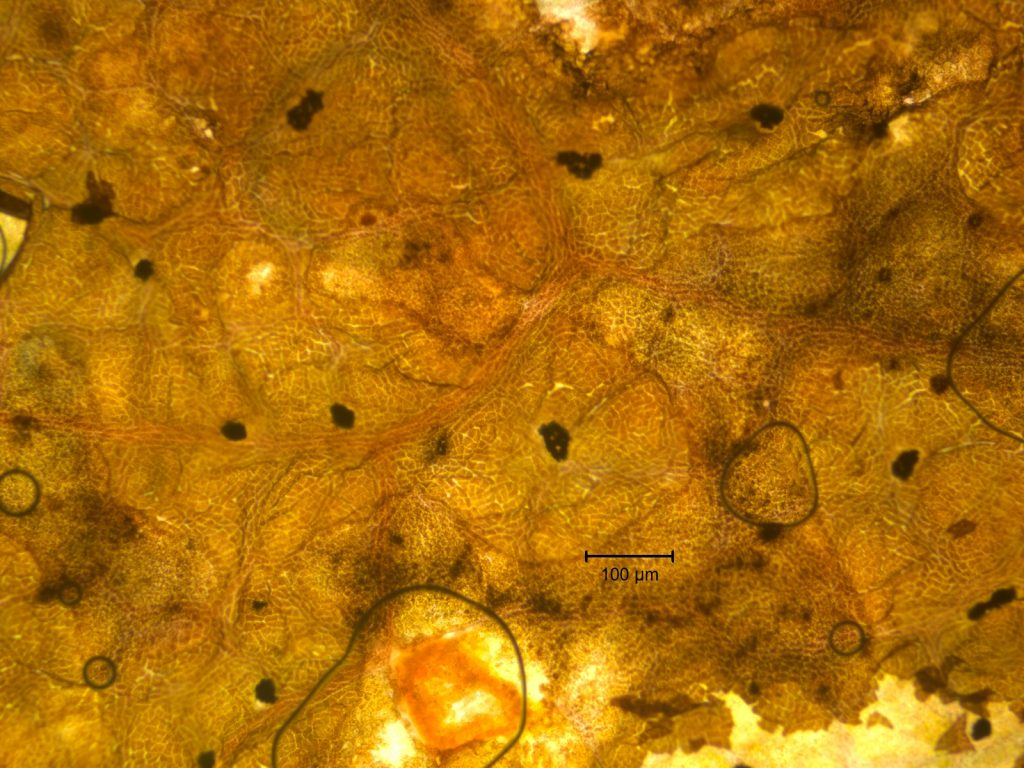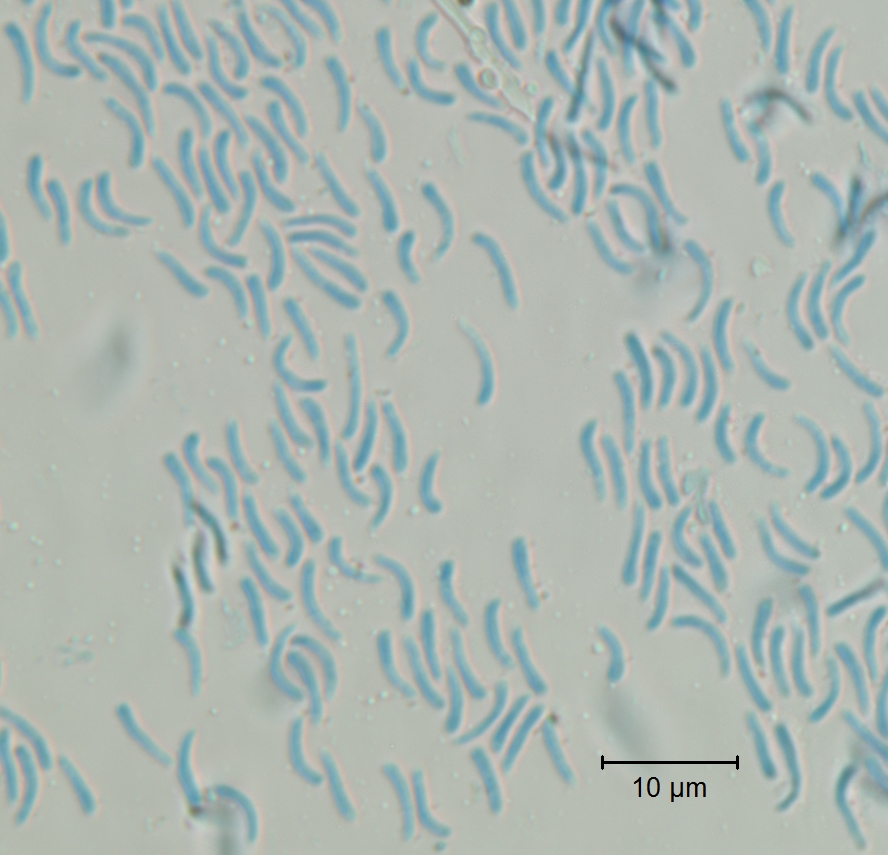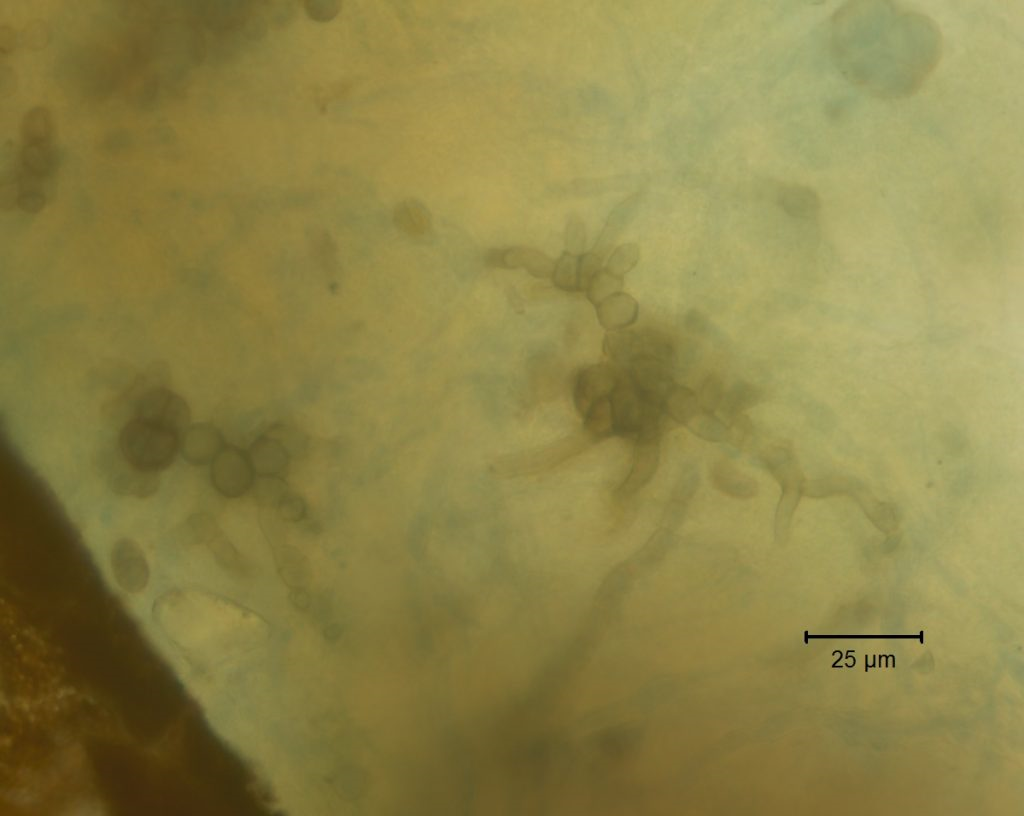Rhytisma acerinum
Tar spot of maple is a common sight in Michigan.

- Phylum: Ascomycota
- Class: Leotiomycetes
- Order: Rhytismales
- Family: Rhytismataceae
- Genus: Rhytisma
- Epithet: acerinum
- Authority: (Pers.) Fr.
- Collection #: PLP847_2018_175
- Locale: Jackson County, Michigan
Tar spot of maple is a common sight in Michigan. It can be recognized by black spots on the leaves of Maple trees that have the appearance of tar (thus the common name). Fortunately, the disease is mostly cosmetic and causes little real health issues for the tree. Late in the season, some leaves can drop due to the infection, but the numbers are generally small and do minimal harm to the tree.
Tar spot is caused by Rhytisma acerinum and two other closely related species, R. americanum and R. punctatum. R. americanum causes tar spot on Norway maples, while R. acerinum and R. punctatum are found on Red and Silver maple. R. puntatum causes large numbers of large spots, while R. acerinum causes fewer, larger spots.
Acerinum is in the phylum Ascomycota and forms sterile fungal tissue, called stroma, inside the leaf tissue. Apothecia are formed within these stroma and give rise to brown-black lesions that resemble spots of tar. The apothecia overwinter on plant debris and release ascospores when weather warms up in the spring.

Conidiophores are also produced during the summer months that form non-infectious conidia. Since the conidia do not appear to cause additional infections, it is uncertain as to why they are produced.

Tar spot can be managed by removing infected leaves in the fall. Composting is generally insufficient to destroy the spores, as most home composting does not reach a high enough temperature. Leaves should be burned or removed to a municipal composting pile. Fungicides, particularly copper, can be used to help with control, but since the affected trees have low economic value, this practice is rarely employed.

Reference:
- Jones, S.G. (1925). Life-history and cytology of Rhytisma acerinum (Pers.) Fries. Annals of Botany, 39: 41-75.



 Print
Print Email
Email




